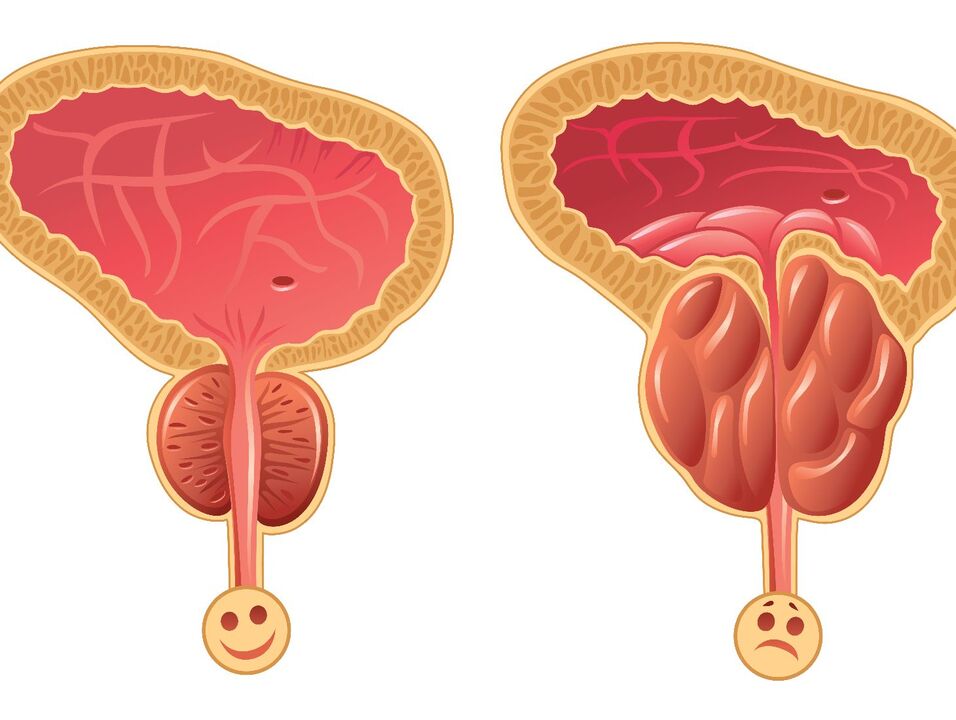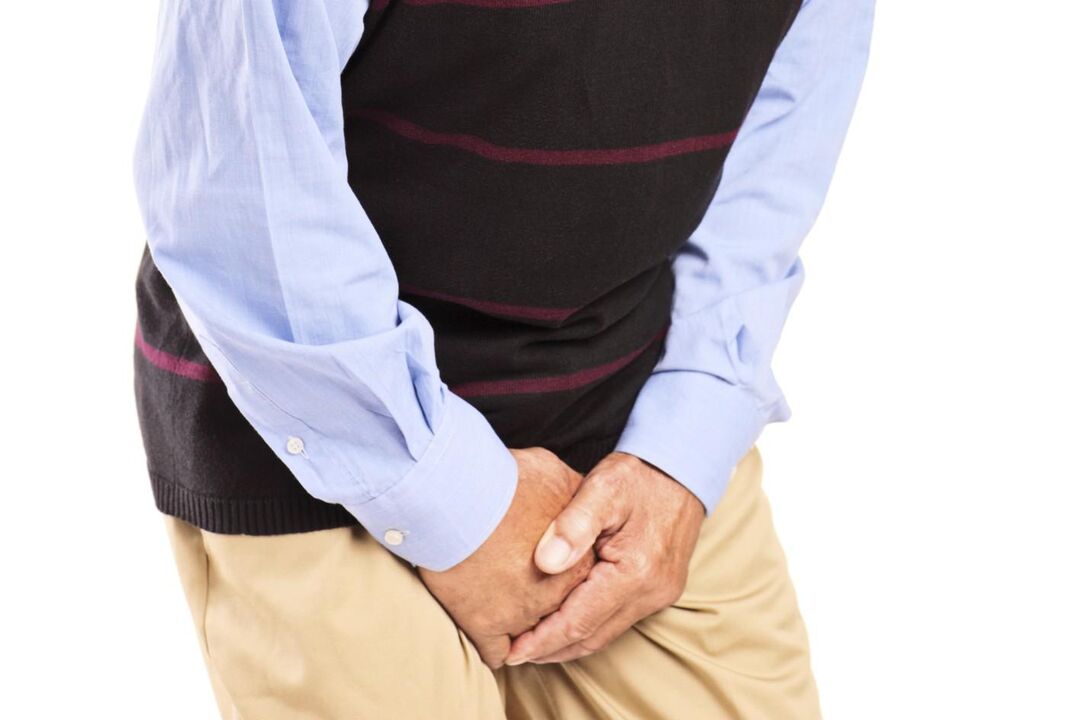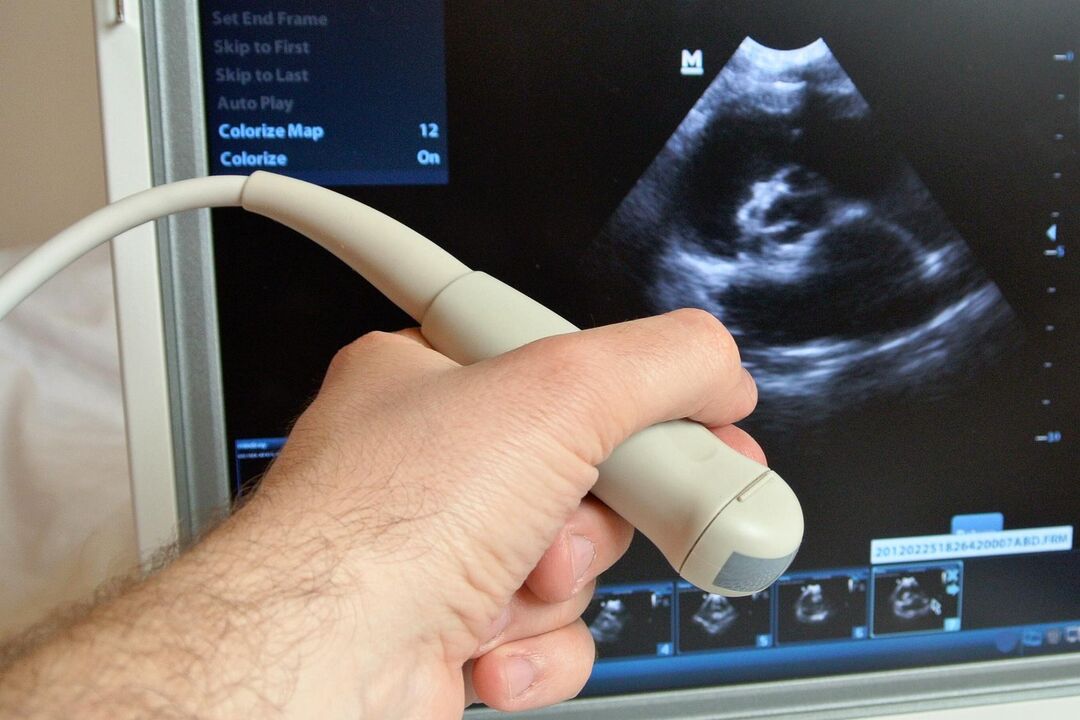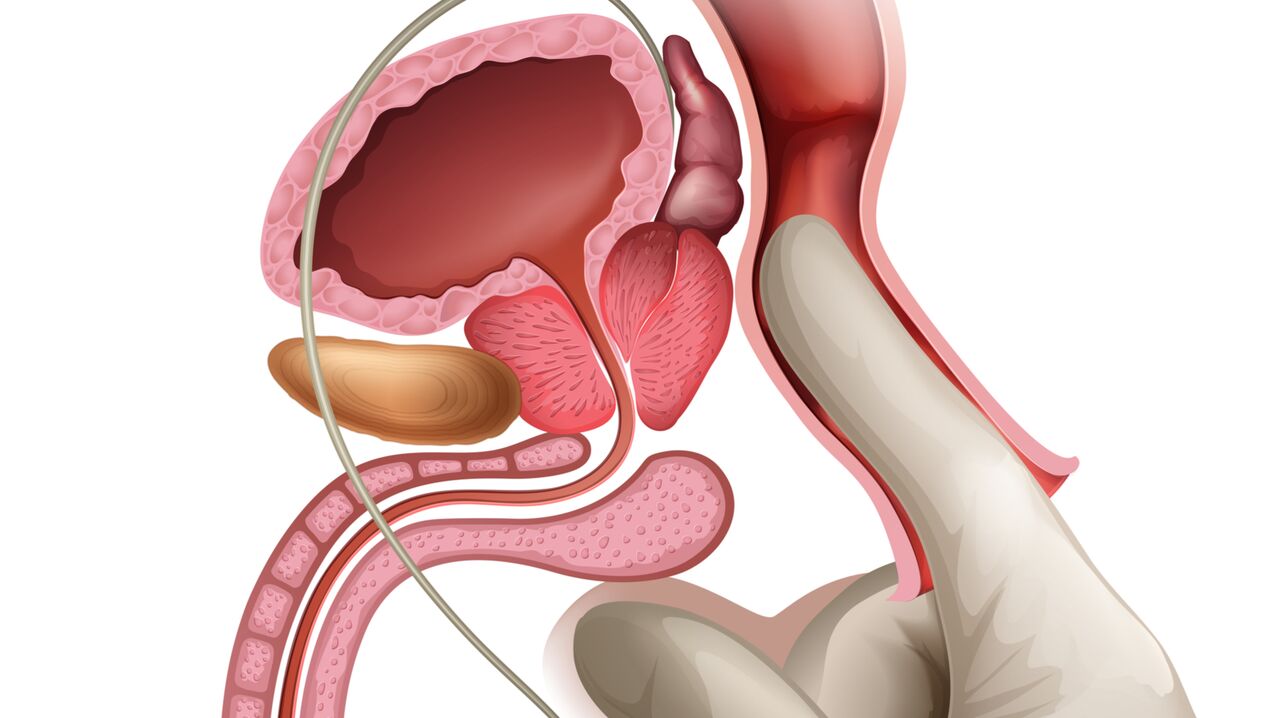If the inflammatory process in the prostate gland is caused by congestion, the disease is called congestive, congestive or non-infectious prostatitis. Prostate inflammation develops due to incomplete emptying of blood-filled lobules. Most often, congestive prostatitis in men occurs due to an irregular sex life, which happens to elderly patients. However, there are cases of the disease appearing against the background of chronic prostatitis and a number of other provoking factors.
Causes of congestive prostatitis

The main and main cause of the pathology is the disruption of normal blood circulation in the pelvic organs. But prostate stagnation occurs due to factors such as:
- Acute and/or chronic diseases of an infectious nature. The infection enters the prostate through the urethra, rectum or lymphatic vessels;
- Hormonal imbalance in the patient's body;
- Increased sexual activity leading to sexual fatigue;
- The practice of coitus interruptus;
- Excitement that does not reach ejaculation;
- Prolonged sexual intercourse with prolongation and "inhibition" of ejaculation;
- insufficient emptying of the prostate;
- A sedentary lifestyle that leads to poor circulation in the pelvic organs;
- Varicose veins of pelvic organs;
- Injury or damage to the pelvic organs.
Factors can be combined and supplemented by individual reasons. It is possible to detect the provoking factor of urological disease only by undergoing a full course of examination by a specialist.
According to the type, congestive prostatitis is divided as follows:
- Venous.Similar stagnation in men occurs if there are pathological changes in the venous system. For example, varicose veins of the lower extremities: the veins expand, blood accumulates in the pelvic organ systems, which leads to the passage of the phenomenon to the prostate and causes the development of pathology.
- Congestive.The form of the disease is characterized by incomplete emptying of the gland, which leads to an increase in the inflammatory process - more common in mature men.
- Cognitive prostatitis– a pathology with implicit symptoms, dangerous because of its complications. Stagnation leads to irreversible consequences of the glandular organ - the detachment of the epithelial layers of the tissue.
- Chronic congestive prostatitis.It appears due to irregular sex life, frequent masturbation, sedentary lifestyle and other factors. The main symptom is that the seminal fluid comes out in the form of a clot. The prostate gland increases in volume, which is dangerous because of the possibility of developing more complex pathologies.
- Infectious.It develops due to infection through the genitourinary system during the course of congestive pathology, which intensifies the inflammatory process and worsens the general condition of the patient.
Important!Only a specialist can identify the type and form of the pathology. Self-medication of congestive inflammation of the prostate gland without consulting a doctor is dangerous and is possible only in the early stages of the disease .
Symptoms of congestive prostatitis

In the first stages of prostate stagnation, the symptoms are subtle and unclear. This is what complicates the timely diagnosis of the problem. But there are still some signs of pathology:
- painful sensations in the groin, replaced by burning, pain after long walks, standing;
- radiating pain in the area of the sacrum, inner thigh;
- decreased sexual desire;
- the feeling of incomplete emptying of the prostate - incomplete orgasm;
- weak erection;
- pain during urination;
- acts of evacuation of urine at night are characterized by a thin or interrupted flow;
- sharp stabbing pains in the groin, radiating to the anal area;
- deterioration of general health: weakness, fatigue, lack of mind.
The development of pathology from an acute form to a chronic one leads to an increase in pain syndromes - the discomfort becomes stable. Pain attacks become more frequent and are localized in the groin. However, acute relapses are replaced by remission, and the patient believes that he has gotten rid of the disease, and congestive prostatitis has already turned into chronic, dangerous inflammation of the excretory ducts and detachment of epithelial tissues.
Important!The most dangerous symptom is the cessation of urination. If the patient has a similar phenomenon, you should immediately consult a doctor, regardless of whether the syndrome is aggravated by pain symptoms or other signs of prostate stagnation. .
Diagnosis of congestive prostatitis

The non-specificity of the disease makes diagnosis difficult. In order not to make a mistake with the conclusions, the urologist performs a series of examinations:
- Palpation and rectal examination to assess the condition of the prostate gland and rectal hemorrhoids;
- Blood and urine tests;
- Analysis of secretory fluid of the prostate to determine resistance to groups of drugs;
- Ultrasound;
- In special cases, CT scans and examinations of the genitourinary system are prescribed - this allows us to clarify the cause of the pathology.
Only after a diagnosis is made, treatment for congestive prostatitis is prescribed. It should be remembered that the disease can be successfully eliminated at any stage, but maintaining full sexual abilities is possible with early treatment.
Treatment of congestive prostatitis
To choose an effective treatment option for congestion in the prostate gland, an examination is performed and an individual course of therapy is prescribed. Today, medicine has many options for curing the disease: medication, physiotherapy, surgery, as well as popular methods of eliminating the problem help all patients without exception, but only the attending specialist can tell you how to treat congestive prostatitis.
medicaments
Drug therapy is prescribed using antibacterial agents, alpha-blockers, muscle relaxants, hormonal and phytotherapeutic agents. Antibacterial drugs are indicated for the treatment of congestive prostatitis caused by infections, but the drug must be taken together with a group of drugs to maintain immunity. The choice of medication is influenced by the bacteria causing the pathology.
Alpha-blockers are medications that open the sphincters, which stops the impact of impulses that affect smooth muscle tone. Taking medications improves the patient's condition, increases the rate of urination, decreases the sensitivity of spasms and pressure on the bladder walls.
Herbal medicine is a specially selected complex of plants that is used only as an adjunct to other treatment methods. Herbal medicine relieves inflammation and swelling well, has an antibacterial effect and helps to disperse congestion in the prostate.
Treatment with hormonal drugs is used to normalize the balance of estrogens and androgens. Therapy relieves inflammation and prevents further development of pathology.
Muscle relaxants are a special group of drugs that act on the striated muscles located in the perineum. A decrease in muscle tone leads to a decrease in pain, which relieves tension in the pelvic diaphragm and eliminates the feeling of fullness and pressure.
Important!Drug therapy is prescribed only by a specialist. Self-medication is prohibited. Herbal medicine is also contraindicated in patients without an established diagnosis. In the early stages of congestive prostatitis, choosing the wrong complex will be ineffective, in the later stages it will lead to a worsening of the patient's condition. .
Physiotherapy and its role in effective treatment

A large number of methods of physiotherapeutic influence on the patient's body allows you to choose the most effective treatment, often without the use of heavy medications. The role of physiotherapy in eliminating the disease is great:
- Normalization of blood circulation in the pelvic organs;
- Elimination of negative symptoms;
- Restoring the normal functioning of the prostate gland;
- Increase male sexual power;
- Blockage prevention.
Physiotherapy methods include:
- Prostate massage.One of the effective ways to treat congestive prostatitis. By improving blood circulation, massage completely eliminates congestion, improves muscle tone and the diaphragm, increases the effect of medicines and normalizes the function of the prostate ducts. Contraindications: incomplete emptying of the bladder, organ cancer, cysts, prostate stone formation.
- Exercises aimed at strengthening and relaxing the pelvic floor musclesis an "at home" treatment option that shows ideal results. A special set of exercises is simple to perform, for example: squeezing and loosening the muscles of the anus, but at the same time it is so effective that it allows you to completely get rid of congestive prostatitis and never again experience the threat ofpathology.
- Neuromodular therapy (neuromodulator).is a treatment with electric currents aimed at eliminating pain syndromes. It is performed in several ways, the most popular of which is the stimulation of the nerve endings of the spinal cord. Percutaneous exposure gives a good result, however, the treatment has contraindications and is prescribed on an individual basis.
- Acupuncture massage or acupuncture- a good and effective method that involves inserting special needles into strictly defined points of the body. Purpose: activation of restoration processes and normalization of blood flow, acceleration of recovery. But there is a great risk that you will fall into the hands of a bad specialist and instead of treatment, the problem will worsen.
The laser method of treating congestion of the prostate gland has proven itself very well. The effect on the nerve endings of cells ensures the rapid elimination of the main problem and associated negative symptoms.
Important!Physiotherapy, like other treatment methods, is prescribed by a specialist. Seeking help without an established diagnosis is dangerous .
Surgical methods

Treatment of stagnation with surgery is the last resort, which is used in the absence of the effect of other methods of eliminating the pathology. Indications for intervention are:
- narrowing of the urinary tract;
- prostate abscesses;
- sclerosis of the prostate;
- BPH;
- violation of the exit of secretions through the seminal vesicles.
There are several surgical techniques; the choice depends on the clinical picture of the pathology and the individual characteristics of the patient.
ethnoscience
Alternative healing options are welcomed by urologists, but only as an addition to the traditional methods of eliminating the disease. The advantage of home treatment is that it increases the effectiveness of taking medications, reduces pain and normalizes blood circulation.
How to treat prostate congestion:
- Propolis tincture is sold in pharmacies or prepared independently from 100 grams. raw materials (natural) and 1 liter of pure vodka. Mix, leave in a dark and cool place for 14 days (occasionally shaking the container), take drops: 7-10 drops 4 times a day before meals. Propolis-based medicine provides the fastest positive effect and is especially good for chronic congestive prostatitis in elderly patients.
- Regular pumpkin seeds will help cure early forms of pathology. 100 gr. Grind the cleaned raw materials in a mortar to a paste, mix with 1 tbsp. l. good honey, take 1 tbsp. on an empty stomach in the morning until the symptoms of the disease are completely eliminated and as a preventive measure.
The simplest and most affordable way to get rid of congestive prostatitis is to eat greens and parsley decoction. The plant is rightly considered "masculine" and helps not only to relieve all negative symptoms, but also to normalize blood circulation in the pelvic organs. You can and should eat fresh greens every day, and also create 100 grams. herbs 1 l. boiling water, leave for 15-20 minutes and drink as tea throughout the day.
Congestive prostatitis is a curable disease, but a man must understand that treatment must begin as soon as possible. There are many factors that provoke pathology, so stagnation can occur in any patient.































